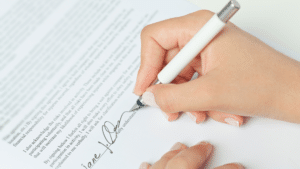The last several years have been full of changes, both in the residential construction industry and the world as a whole. You probably remember searching desperately for toilet paper in early 2020, and you may also have seen the impact of the baby formula shortage of 2022. The supply chain is more than just what you see on the shelves at the grocery store, though: even home builders are at its mercy.
How have changes to the supply chain impacted the building industry, and what materials are in the greatest demand? How are industry leaders addressing these issues? And what can you expect from the home builders who face backorders and supply shortages?
Building Material Shortages
If there is one thing we’ve learned during the last two years, it’s that the world is an extremely volatile place. In the on-demand economy, the slightest spike in demand can lead to a disaster. This impacts not only newly built housing opportunities but also renovation projects and the real estate industry.
- Lumber: Residential contractors are currently facing the worst problems when it comes to lumber shortages. The price of lumber quadrupled between May 2020 and May 2021, while the supply remained static or even went down.
- Concrete: Concrete is another material that faces severe shortages. Even precast concrete comes at a higher price than it used to. The good news is that if you do opt for poured-in-place concrete, it will take the same amount of time to set, no matter what the market looks like.
- Metal: Metal forms the backbone of any home, from pipes and fixtures to steel trusses. Because it’s a recyclable resource, many home builders have found that metal is usually more available than wood or fiberglass. However, road and rail disruptions have a significant impact on vendors’ ability to move these materials from place to place.
- Labor: Although you might not think of it like lumber or concrete, labor is also a finite resource. Many laborers found themselves out of work in the pandemic’s early days, found alternative employment, and never looked back.
Building Industry Supply Chain Disruptions
The supply chain has many parts, and home builders have to consider more factors than the availability of materials. COVID-19 plays a primary role in most of these factors, even though we’ve gone beyond the days of nationwide stay-at-home orders. In today’s highly interconnected society, an isolated virus outbreak can have knock-on effects halfway across the globe.
Pandemic-related Disruptions
As an example, consider a lumber yard in China that pauses production for a week due to a COVID-19 outbreak among its staff. This closure will have some obvious effects: the factory’s backlog of work will increase, and its clients will face delays. When the lumber yard reopens and begins to address this backlog, they may find that foreign ports can’t handle the increase in shipping volume, leading to delays on that end. During that time, the truck drivers who normally would transfer the lumber to their clients have taken other jobs, leading to piles of wood just sitting in warehouses for weeks or even months.
America’s Housing Shortage
COVID-19 is far from the only factor leading to these supply chain disruptions, however. Even in 2018—well before the virus made its first appearance—the United States faced a massive housing shortage.
Freddie Mac estimates that between 2018 and the end of 2020, the housing deficit grew from 2.5 million homes to more than 3.8 million. In practice, this means that home buyers are making purchases as soon as a house goes onto the market, sometimes even on the same day that sellers list them. Home builders, on the other hand, are struggling to keep up with this increase in demand.
Natural Disaster Disruptions
Natural disasters can have a similarly devastating impact on the supply chain. A hurricane that closes a port for weeks can cause problems for months or even years down the line. Likewise, the Texas deep freeze of 2021 devastated the petrochemical industry, impacting the entire home building industry (from roofing tiles to fiberglass).
What Do These Disruptions Mean for Your Custom Home?
If you are a home builder or working with one, patience is the key to dealing with these supply chain disruptions. Even if all the materials you use are in stock, you may still face delays in shipping or issuing permits. If you can plan for these delays, your experience will be much smoother, even if your project does take longer than you had originally expected.
Clear and consistent communication is always critical to the completion of any project, but it can make or break something as complex as building a new home. The clearer an idea you have of what you are looking for, the happier you will be with the end result. Before you even begin searching for a custom home builder, know your priorities (and what you can do without).
You will also need to be flexible with the plans that you make. If the manufacturer places your dream light fixtures on backorder, you may end up adding thousands of dollars to your project’s price tag (and weeks to its construction time) if you wait. If you have backup fixtures already in mind, you can order those instead and get back to building sooner. Keep in mind that choosing a more expensive item that’s in stock may end up saving you money if the delay is substantial.
Finally, you should expect to pay more for your home than you would have five or ten years ago. Even where supply and demand have remained static, inflation has increased the cost of even the most basic home building supplies.
Whether you want to build your dream home or simply renovate your kitchen, Schar Construction should be the first place you look. We have been building quality custom homes in the Eugene area since 1975, and our home builders have seen everything that Oregon can throw at us! Give us a call at 541-229-6270 today to schedule your free estimate.



